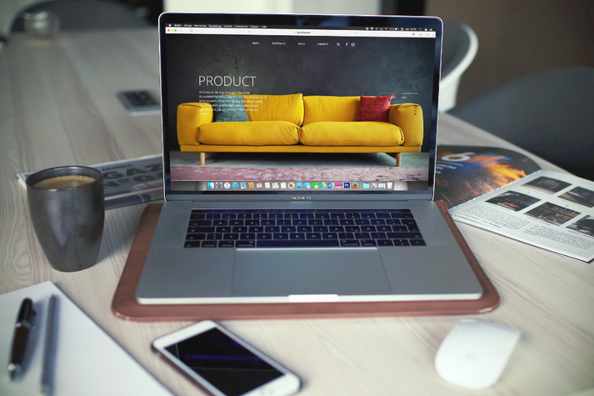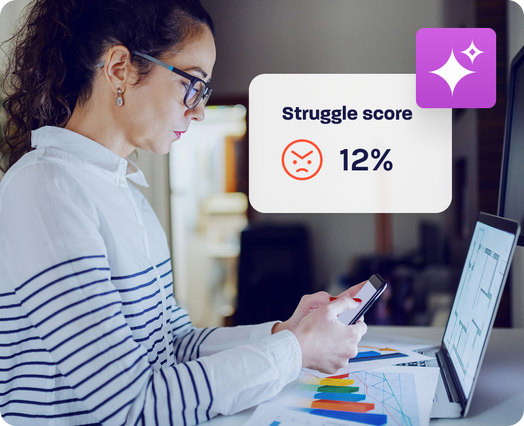
The future of retail from customer experience perspective
Many people are sharing their predictions about the future of retail and how it’s going to look in five years’ time. Of course, no one has the crystal ball that can accurately tell the future so these analyses are based on data, trends, preferences and even macro inputs that affect the overall economy.
Retailers leaving malls and companies merging and consolidating or closing shops are among the stronger voices heard as the effect is so broad and wide.
I want to share my perspective from the world of Digital Customer Experience. While this is hardly the only evidence of preferences and behavior, I believe that it’s within the most accurate and predictive sources of behavior analytics in retail that exist. So below are the 5 most important trends that are backed by customer experience analytics data:
- Convenience is the name of the game – I want to shop what I want, when I want, from any device that I want. I want to have the freedom to choose if I want it delivered or pick it up at my leisure. From the retailer point of view, they want to have this type of visibility, not only what ended up being the final choice but the journey the customer went through to get to that end result. Was it its first choice? Were there any struggles along the way? Is it a matter of availability that affects logistics and distribution? Only a complete and deep set of data will give me that answer. Data that can be attained through means such as session replay.
- Mobile cannot be siloed – My smartphone is my computer, my laptop turns to a tablet on demand, and both are my de-facto wallet. Some retailers (same as other verticals) are treating mobile as an almost alien channel that is managed separately and independently. Many of the vendors in the Digital Customer Experience space don’t support native mobile apps which plays into this vicious loop. The healthy trend of the last few months is that if a solution doesn’t include the mobile data and the mobile perspective, then its obsolete right before the start. Nevertheless, the retailers that are doing best regarding understanding experience of their customers are those that combine a consolidated view of web and mobile activity. This is the only way to show a real-life journey of their customers. The goal is not only to break the silo but to integrate the view to a broader data set.
- Customers have a voice and are not afraid to raise it – Short surveys and a myriad of platforms to voice feedback, also known as Voice of Customer (VOC) are becoming increasingly popular. The interesting perspective on these solutions that they are almost always tied to an interaction or a session that a customer just had with the retailer/organization. This reality is shining a new light into the need to have visibility into exactly what happened during that session. This is not critical just to better understand the experience of this particular customer but for 2 additional reasons: how many of my customers are impacted by the same case/struggle/pain/situation. How can I prioritize action if I cannot tell the extent of the problem? Moreover, without knowing if this is a system, environment, user or design – how can I decide who should own the actions? The second reason is geared towards the need to be able to predict (conversion or churn) based on behaviour of customers. By learning the steps of the journey of my previous customers, will I be able to predict what is going to happen next? Glassbox can show you how to answer a clear yes to that question.
- Machine learning – Going back to the predictions around brick and mortar, one number that everyone seems to agree with is that on-line sales continue to grow at double-digit pace for the last few years. That means that organizations ought to be able to absorb and analyse an ever increasing number of digital interaction, support incremental growth of infrastructure/resources in a much faster pace. However, what I find most interesting about this trend is the need to support automation or insights as well as machine learning capabilities to understand behaviour and trends. Even the slightest deviation can tell a much bigger trend and indicate a change in preferences or struggles that may exacerbate in a short period of time. Only by giving machine the ability to pinpoint to these deviations, customers will be able to know where to look and focus their time and effort. Glassbox is leading the pack at offering built in ML analytics capabilities with the largest number of users and sessions captured giving you the automatic insights that are so critical to your business
- Peaks and lows in preferences – Remember the time when fashion was limited to four seasons? When colors were “trendy”? Today’s preferences are evolving by the hour and affected by something a celebrity wore or another cause for a spike in search and buying decisions. In addition, more retailers are offering the option to “lease fashion”, bringing the subscription model to a segment in which it didn’t exist before. Stay ahead of the curve by utilizing a variety of customer insight tools.
In a way, this fifth perspective truly incorporates all the others under one roof. It combines the need for now, the need to know the demand to react and to be agile and personal. Only when retailers have access to the data and the exact journey their customers went through, they will be able to cope with these trends.
In summary, digital experience is at the heart of your relationship with your customers. Having a platform that is robust, comprehensive and holistic is key to stay ahead of your competition.
Crystal ball? We don’t need it when we have the data on our side.







